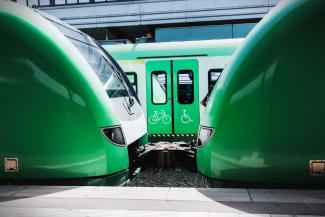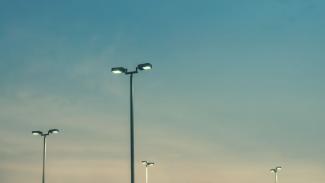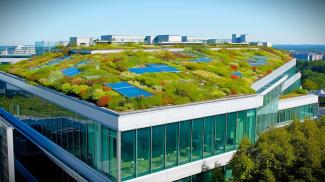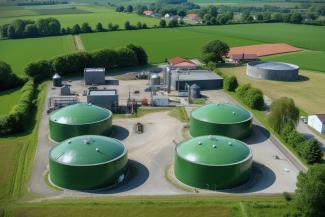PPP Models for ERP
Introduction to the Models - Appendix C
In addition to the Project Guidelines developed, this Appendix lays out the different models for potential public-private partnerships (or PPPs) to generate emissions reduction credits (ERCs) from deploying technologies that reduce or remove emissions. These could also include activities that are part of larger infrastructure-type investments. ERCs in these models are expected to enable these projects to incorporate emission reduction or removal activities in the larger package while allowing them to either maintain their financial viability or recover their invest-ability, through the additional revenue streams from the sale of the credits.
The 12 models, as summarized in Table 1, are based on case studies across different sectors. They cover both existing and ongoing projects that have incorporated emissions reduction or removal activities into larger infrastructure projects, largely to improve their financial viability.
Table 1: PPP Models Detailed
#
|
Model
|
Applicable Methodology
|
Proposed PPP model
|
|
1
|
MRT Energy Efficiency Deployment
|
Mass Rapid Transit Projects
|
Existing-Refurbish-User-Tariffs
|
|
2
|
Rural Electrification
|
Electrification of communities through grid extension or construction of new mini grids
|
New-User-Tariffs
|
|
3
|
LED Streetlight Deployment
|
Demand-side activities for efficient outdoor and street lighting technologies
|
Existing-Refurbish-Finance-Bulk-Fees
|
|
4
|
Rooftop Solar Installation
|
Renewable electricity generation for captive use and mini-grid
|
New-Build-Bulk-Fees
|
|
5
|
LED Lighting Deployment
|
Demand-side energy efficiency activities for specific technologies
|
Existing-Refurbish-Finance-Bulk-Fees
|
|
6
|
E-Bus Deployment
|
Bus rapid transit projects
|
New-Refurbish-Finance-Bulk-Fees
|
|
7
|
EV Charging Systems Installation
|
Methodology for Electric Vehicle Charging Systems
|
New-Build-Finance-User-Tariffs
|
|
8
|
Biodigester Deployment
|
Reduced Emissions From Cooking And Heating – Technologies And Practices To Displace Decentralized Thermal Energy Consumption
|
New-Build-Finance-User-Fees
|
|
9
|
Waste-to-Power
|
Avoidance of landfill gas emissions by in-situ aeration of landfills
|
New-Build-Finance-Bulk-Tariffs
|
|
10
|
Waste Treatment Facility Installation
|
Avoided emissions from organic waste through alternative waste treatment processes
|
Existing-Build-Finance-Bulk-Tariffs
|
|
11
|
Climate Smart Farming Deployment
|
Adoption of Sustainable Agricultural Land Management
|
Existing-Bulk-Tariffs
|
|
12
|
Reforestation Program
|
Afforestation and reforestation of lands except wetlands
|
New-Finance-Bulk-Tariffs
|
The models will start by identifying the infrastructure project and the potential ERC-generating activities to be deployed along with it. This will then lead to a proposed PPP model based on the dimensions in Table 2, based on the learnings from the case studies and the specific considerations for this permutation of ERC activity and wider infrastructure project. It will then describe the case study, including how it was structured and the impact achieved or targeted, before going into the summary business plan. The business plan will feature a reconstructed version of the basic forecasts of revenues and costs for both the ERC and non-ERC component of the project, based on the information available from the case study and additional desktop research.
Table 2: Public-Private Partnership Model Dimensions
Dimension
|
Attribute
|
Description
|
|
Business
|
New
|
The PPP can either result to the creation of a new entity or the take-over of and existing business
|
|
Existing
|
|
Construction
|
Build
|
The project company may be obliged to undertake all activities relating to the construction of a new asset which will differ from refurbishing already existing assets
|
|
Refurbish
|
|
Private Funding
|
Finance
|
The private-led project company may carry the obligation to raise financing for the project
|
|
Service
|
Bulk
|
The project company may be delivering services to a single entity in the case of “Bulk” or delivering directly to the consumers of the service in the case of “User”
|
|
User
|
|
Revenues
|
Fees
|
The revenue streams in a project may stem from fees paid by a single or limited number of off-takers or from tariffs paid by a large number of consumers
|
|
Tariffs
|
Models
Note/s:This section is intended to be a living document and will be reviewed at regular intervals. The Guidelines have not been prepared with any specific transaction in mind and are meant to serve only as general guidance. It is therefore critical that the Guidelines be reviewed and adapted for specific transactions. Unless expressly stated otherwise, the findings, interpretations, and conclusions expressed in the Materials in this Site are those of the various authors of the Materials and are not necessarily those of The World Bank Group, its member institutions, or their respective Boards of Executive Directors or member countries. For feedback on the content of this section of the website or suggestions for links or materials that could be included, please contact the Public-Private Partnership Resource Center at ppp@worldbank.org.












